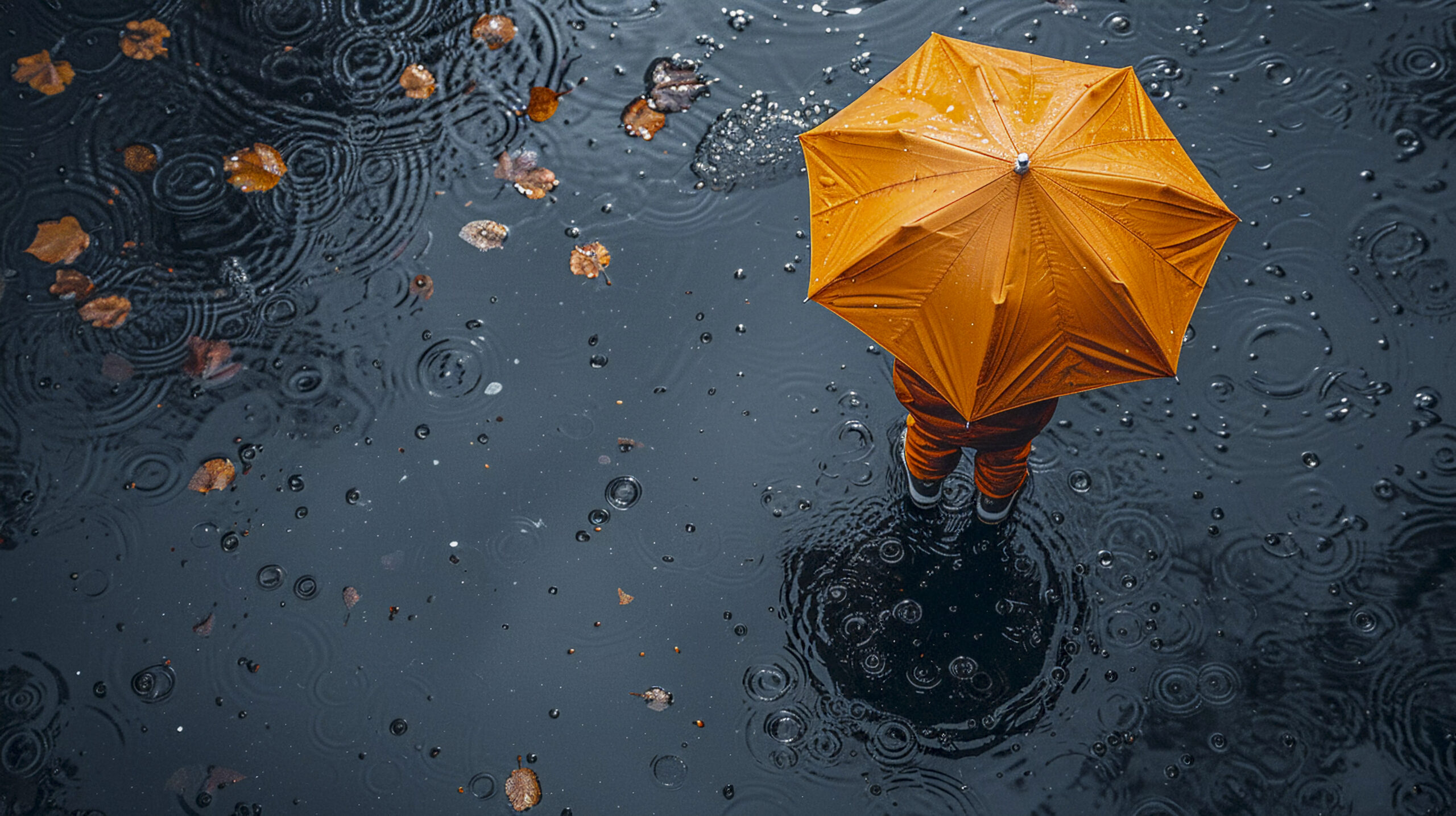You know the scent. That first, unmistakable whisper of damp earth rising to meet the falling sky—petrichor. It’s primal, stirring something deep within us. Rain. It’s life’s most essential libation, quenching thirst, painting landscapes green, and carving the very bones of our planet. But that gentle patter on your roof, that sudden downpour turning streets to rivers, is the final, visible sigh of an epic, invisible journey. It’s a story written not in ink, but in the ceaseless dance of energy, water, and air—a story we’re about to unravel.
The Spark: Sun’s Kiss and Water’s Escape
It all begins, as most things do on Earth, with the Sun. Its radiant energy doesn’t just warm our skin; it’s the engine driving the entire water cycle. Imagine a vast, sunlit ocean. That relentless solar energy bombards the surface water molecules. It doesn’t take much—just a little extra jolt—to break the delicate hydrogen bonds holding them together. When a molecule near the surface absorbs enough heat, its energy skyrockets. It vibrates violently, breaks free from its liquid companions, and… escapes. It becomes water vapor, an invisible gas, lighter than air. This is evaporation.

It’s not just oceans. Lakes, rivers, damp soil, the very sweat on your brow—any exposed water is susceptible to the sun’s persuasive heat. Even plants join the chorus through transpiration, releasing water vapor from their leaves like countless microscopic geysers. This constant, global exhalation of vapor is the first, silent act.
The Ascent: Rising on Warmth, Carried by Wind
Water vapor, being light, mixes into the atmosphere. But the air isn’t uniform. Near the warm Earth’s surface, air heats up, expands, and becomes less dense. Like a hot air balloon, it begins to rise. This rising air acts like an invisible elevator, carrying its precious cargo of water vapor molecules upwards into the cooler, higher reaches of the troposphere (the lowest layer of our atmosphere).
Wind plays a crucial supporting role. It sweeps across the planet, gathering vapor evaporated from one region and transporting it vast distances. The moisture feeding a monsoon over India might have started its journey weeks before, evaporating from the warm Arabian Sea. It’s a global relay race of humidity.
The Transformation: Cooling, Condensation, and the Birth of Clouds
As the vapor-laden air rises, it enters progressively cooler altitudes. Remember physics? Cool air can’t hold as much water vapor as warm air. The vapor hits its saturation point—the air is “full.” This is where the magic happens: condensation.
The invisible vapor needs something tangible to cling to, a platform for its transformation. Enter condensation nuclei. These are microscopic particles constantly floating in the air—specks of dust, salt crystals whipped up from the ocean, pollen, and even pollution particles like sulfates. When a water vapor molecule bumps into one of these nuclei in cool, saturated air, it loses energy and condenses back into liquid form. Millions upon millions of these tiny liquid water droplets coalesce around countless nuclei.
Voilà! A cloud is born.
Those fluffy cumulus, wispy cirrus, or ominous nimbostratus aren’t just water vapor; they’re vast, floating collections of these minuscule water droplets (or, at very high altitudes, tiny ice crystals). The type of cloud depends on the temperature, altitude, and how violently the air is rising. Think of them as visible waystations in the vapor’s journey skyward.

The Gathering Storm: When Droplets Dare to Grow
A cloud is born, but a cloud isn’t rain. Those initial droplets are incredibly small, often less than 1/100th the width of a human hair. They’re so tiny and light that even the gentlest upward air currents keep them aloft, floating like dust motes in a sunbeam. For rain to fall, these droplets need to get heavy. Much heavier.
This is where the cloud becomes a bustling factory. There are two primary assembly lines:
The Collision-Coalescence Highway (Warm Clouds): Imagine the cloud as a crowded sky-city. Droplets are constantly jostled by air currents. Sometimes, they collide. If the collision is gentle enough, they can merge, or coalesce, into a larger droplet. This larger droplet falls slightly faster, colliding with more droplets on its downward path, growing like a rolling snowball. This process dominates in clouds where temperatures are entirely above freezing (0°C / 32°F), common in the tropics.
The Ice Crystal Express (Cold Clouds): In clouds that extend high enough where temperatures are below freezing, something more complex happens. Water vapor can directly turn into ice crystals (deposition) on certain nuclei. Crucially, ice crystals grow more efficiently from vapor than liquid water droplets do at the same cold temperature. So, ice crystals grow rapidly, often at the expense of nearby supercooled water droplets (liquid water existing below 0°C). When these ice crystals grow heavy enough, they begin to fall. As they descend into warmer air layers, they melt, becoming raindrops. If the lower layers are cold, they might reach the ground as snow, sleet, or hail—but that’s another story. This “Bergeron process” is critical for rainfall in mid-latitude storms.
The Descent: Gravity’s Call and the Fall to Earth
Eventually, whether through relentless collisions or efficient ice crystal growth, some droplets (or melted ice crystals) become too large and heavy for the upward air currents to support. Gravity, the ever-present force, wins the tug-of-war. The droplet begins its fall towards Earth.
This descent isn’t always smooth. The droplet might encounter updrafts that carry it back up, allowing it to grow even larger before falling again. It might collide and merge with other falling drops. Wind shear can push it sideways. The shape of the raindrop itself changes as it falls, flattening at the bottom due to air resistance until, if large enough, it resembles a tiny hamburger bun more than a teardrop.
The Impact: From Sky-Dweller to Earthly Gift
Finally, the journey ends. The raindrop splashes onto a leaf, soaks into thirsty soil, joins a gurgling stream, or plinks onto a city pavement. It’s back where it started, in liquid form on the Earth’s surface. But its work is just beginning.
This returning water:
Refills: Replenishes groundwater aquifers, lakes, and rivers—our vital freshwater reserves.
Nourishes: Waters crops and natural vegetation, driving the engine of life on land.
Sculpts: Over eons, rain erodes mountains, carves valleys, and shapes the very landscape.
Cleanses: Washes dust and pollutants from the air and surfaces.
Sustains: Fills reservoirs for drinking water, irrigation, and hydropower.

The Nuances: Why Raindrops Keep Falling (Differently)
This grand cycle explains how nature loves variation. Why the gentle mist versus the torrential downpour? Why rain here and not there?
The Energy Source: Intense solar heating driving strong updrafts creates towering cumulonimbus clouds capable of producing heavy downpours, thunder, and lightning. Gentle, widespread rain often comes from layered stratus clouds formed under more stable atmospheric conditions with weaker uplift.
Atmospheric Rivers: Think of these as concentrated “rivers” of moisture flowing high in the atmosphere, thousands of miles long, capable of dumping enormous amounts of rain when they make landfall and are forced upwards.
Topography: Mountains force moist air upwards, cooling it rapidly and squeezing out copious rain on the windward side (orographic lift), leaving the leeward side dry (rain shadow).
Fronts: Where large air masses of different temperatures meet (cold front, warm front), the warmer, less dense air is forced over the cooler, denser air, leading to widespread cloud formation and precipitation.
The Wonder: More Than Just Science
Understanding the intricate physics and chemistry behind rain doesn’t diminish its wonder; it deepens it. That drop hitting your window travelled thousands of feet, transformed from gas to liquid, perhaps even ice, navigated turbulent winds, and grew from microscopic beginnings. It connects the vast ocean to the tiniest plant root, the fury of a storm to the quiet filling of a well.
It’s a reminder of Earth’s dynamic equilibrium—a constant, planet-wide recycling of its most precious resource, driven by the Sun and sculpted by the atmosphere. The next time you hear the rain, smell the petrichor, or watch a storm roll in, remember: you’re witnessing the final, visible sigh of a silent, heroic, and utterly essential odyssey—the magnificent, scientific, and deeply poetic journey of water from sky to earth. It’s not just weather; it’s the planet breathing, the world turning, life itself falling gently from the heavens.







+ There are no comments
Add yours